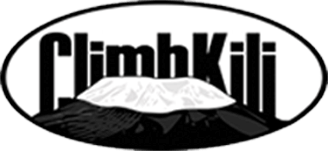Preparing for your Mount Kilimanjaro adventure requires meticulous planning, especially when it comes to packing. With diverse climate zones ranging from lush rainforests to freezing summit conditions, having the right gear is crucial for safety, comfort, and summit success. This comprehensive Kilimanjaro packing guide will walk you through everything you need for an unforgettable climb.
Understanding Kilimanjaro’s Unique Climate Zones
Mount Kilimanjaro offers five distinct climate zones that demand strategic packing:

Cultivation Zone (800-1,800m): Warm and lush landscapes.
Rainforest Zone (1,800-2,800m): Humid, rainy, and prone to muddy trails.


Heather-Moorland Zone (2,800-4,000m): Cooler temperatures with sparse vegetation.
Alpine Desert Zone (4,000-5,000m): Intense sun during the day and freezing temperatures at night.


Arctic Zone (5,000m+): Icy, windy, and extremely cold with snowfields and glaciers.
Packing appropriately ensures your safety and adaptability across these environments.
Essential Kilimanjaro Packing Tips
Clothing: Layering is Key
- Base Layers: Moisture-wicking thermals to stay dry.
- Mid Layers: Insulated fleece or down jackets for warmth.
- Outer Layers: Waterproof and windproof jackets and pants.
- Trekking Shirts and Pants: Quick-dry, lightweight options.
- Gloves: Both lightweight liners and insulated, waterproof gloves.
- Hats: A sun hat for lower altitudes and a thermal beanie for summit conditions.
Footwear: Protect Your Feet
- Hiking Boots: Waterproof with ankle support. Ensure they’re well broken-in.
- Trekking Socks: Use wool or synthetic socks to prevent blisters.
- Camp Shoes: Lightweight options for comfort at camp.
Sleeping Gear
- Sleeping Bag: Four-season rated to -10°C (14°F).
- Sleeping Pad: Insulated for warmth and comfort.
Accessories and Equipment
- Daypack (20-30L): Carry water, snacks, and extra layers.
- Trekking Poles: Provide balance and reduce knee strain.
- Headlamp: Essential for early summit starts.
- Hydration System: Water bottles or bladders for 3-4 liters daily.
Personal Health and Hygiene
- First Aid Kit: Include blister treatment, altitude sickness medication, and pain relievers.
- Sunscreen and Lip Balm: High SPF for intense UV exposure.
- Biodegradable Wipes: Useful for personal hygiene in remote areas.
Snacks and Nutrition
Pack high-energy snacks like protein bars, trail mix, and dried fruits. These provide quick energy during long trekking days and summit pushes.
Top Packing Tips for Kilimanjaro Success
- Use Waterproof Liners: Protect clothing and equipment from rain and moisture.
- Pack Lightly but Wisely: Stick to essentials and respect porter weight limits.
- Test Your Gear: Ensure boots, jackets, and equipment are functional and comfortable.
FAQ: Kilimanjaro Packing Essentials
What should I pack for Kilimanjaro?
You’ll need layered clothing, sturdy boots, a four-season sleeping bag, and essential personal items like sunscreen and a first aid kit.
How do I prepare for Kilimanjaro’s climate zones?
Layer clothing for temperature control and pack waterproof gear for rainy zones. Ensure all items are tested and weather-appropriate.
Do I need special equipment for Kilimanjaro?
Yes, trekking poles, a headlamp, and a hydration system are indispensable.
Internal Resources
For further preparation, check out these related resources:
- Choosing the Right Kilimanjaro Route
- Best Time to Climb Kilimanjaro
Why Packing Right Matters
Packing the right gear is critical to your safety, comfort, and overall experience. Being underprepared can lead to discomfort or even jeopardize your climb. When you pack wisely, you set yourself up for success on the Roof of Africa.
Plan Your Kilimanjaro Adventure
Climbing Mount Kilimanjaro is more than an adventure—it’s a transformative journey. At Climb Kili, we ensure you’re fully prepared with expert advice, experienced guides, and seamless logistics. Contact us today to start planning your climb, and let us help you turn your dream into reality.
Tutaonana juu ya mlima (See you on the mountain) 💚🏔️





